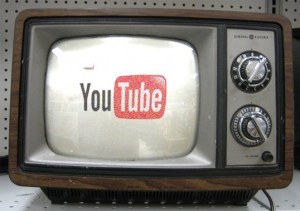Welcome WVFF Guest Blogger
Jim Louderback
 Sure, you think the TV is dead. But it’s not. The act of lazing about in front of a big screen TV watching, laughing and enjoying video content is going to be even bigger than ever. But here’s the rub. It’ll be less about cable and broadcast, and much more about internet video.
Sure, you think the TV is dead. But it’s not. The act of lazing about in front of a big screen TV watching, laughing and enjoying video content is going to be even bigger than ever. But here’s the rub. It’ll be less about cable and broadcast, and much more about internet video.
It boils down to this: If you’re not creating video with the big screen in mind, you’re going to miss one of the biggest developments in 2010.
We’ve already seen great success with Revision3‘s content on Roku; the tiny box that streams Netflix, baseball, Amazon, and now us. Along with Twitter, Pandora, Flickr and more all on the big screen.
We at Revision3 were up nearly 15% in the first two weeks that our channel launched – and that was during the traditional down weeks of Thanksgiving.
Next year TV will get smart.
Vizio, the biggest TV vendor in the US, will bring real connectivity to every TV it sells that’s larger than 45 inches. Many other TVs will do the same.
Boxee’s box will ship.
Cable set top boxes will connect to web video.
It’s a brand new outlet and it can’t be ignored.
 Unfortunately, YouTube seems to be asleep at the wheel. I asked them recently if they were going to play in over the top, they said they prefer to be browser-based rather than having separate interfaces. Sure, having multiple and separate interfaces can be tough, but their approach is wrong. Consider mobile – websites are terrible on that screen. The same goes for the big screen at 10 feet away.
Unfortunately, YouTube seems to be asleep at the wheel. I asked them recently if they were going to play in over the top, they said they prefer to be browser-based rather than having separate interfaces. Sure, having multiple and separate interfaces can be tough, but their approach is wrong. Consider mobile – websites are terrible on that screen. The same goes for the big screen at 10 feet away.
But, let’s imagine I was led to speculation with my YouTube contacts, perhaps they were being… coy. We could very well find Android or Chrome jumping in and powering TVs by 2011.
We’ll see…
In the mean time, you can do a few things to ensure you don’t miss the boat in 2010.
First, produce and distribute in HD. If and when YouTube is available on the big screen, the better looking videos will win. Quality will always be more important in this world.
Second, think about an alternate channel for over the top. Try hooking up with Xbox, glom onto Roku with Mediafly or Blip.TV.
Most importantly, find ways to get your stuff into that world.
Oh, and keep an eye on Revision3 in early January. We’ll be covering the heck out of the annual Consumer Electronic Show, posting on our site, and on our popular YouTube Channel. We’ll be bringing you the latest over the top devices and provide commentary on how this brave new world of internet video is evolving.

Jim Louderback
Jim’s Web Blog
Revisisons3
Revisisones3’s YouTube Channel
Follow Jim On Twitter


